MASc Opportunity-2026: Non-Invasive Glucose Monitoring Research at CADIPT, MIE, University of Toronto

The Center for Advanced Diffusion-Wave and Photoacoustic Technologies (CADIPT) in the University of Toronto’s (UofT) Department of Mechanical and Industrial Engineering (MIE) is looking for one or two student candidates for the MASc degree who will join our research team the latest by September 2026 to work on a Project entitled.
“Pre-Clinical Human Validation of a Wavelength-Modulated Differential Photothermal Radiometry (WM-DPTR) Biosensor for Non-contacting and Non-Invasive Blood Glucose Monitoring”.
We expect that the proposed WM-DPTR biosensor will be an effective glucose monitor across the diversity of the Canadian (and World) populations. The UofT, MIE, and CADIPT are strongly committed to fostering an inclusive and equitable learning and working environment. We welcome applications from all qualified individuals, particularly Indigenous peoples, racialized persons, persons with disabilities, and members of LGBTQ2S+ communities. We value diverse perspectives and experiences that enrich our community. At the CADIPT, we recognize and value the diversity of our community. We are committed to fostering a barrier-free, equitable, and welcoming environment for all current and future team members. We believe that excellence flourishes in an environment that embraces the broadest range of people and perspectives. Therefore, we encourage applications from individuals of all backgrounds, especially those from underrepresented groups.
Entrance to the CADIPT MASc and PhD degree programs requires competence in 5 undergraduate disciplines: core mathematics and physics, and some familiarity with optics, computer coding and biology. To optimally meet the desirable scientific/technical targets set for the Project, candidates with above average transcript marks in at least 3 of the 5 areas identified above are encouraged to apply. They will be prioritized for their potential to succeed in the Project research. The successful candidate(s) will work closely with our Research Associates in charge of the Project and with the Principal Investigator (PI) to whom applications should be addressed by email. Please include transcripts, short bios and a brief paragraph of future career goals. This invitation is intended only for Canadian citizens and permanent residents.
Andreas Mandelis, Professor and PI
CADIPT Director
mandelis@mie.utoronto.ca
IANDIT AT A GLANCE
Institute for Advanced Non-Destructive and Non-Invasive Diagnostic Technologies (IANDIT)
INTRODUCTION:
A new Institute for Advanced Non-Destructive and Non-Invasive Diagnostic Technologies (IANDIT) in the Faculty of Applied Science and Engineering was established on July 2020. At the outset, the Faculty of Applied Science and Engineering (FASE) departments of Mechanical and Industrial Engineering (MIE), Materials Science and Engineering (MSE), Electrical and Computer Engineering (ECE), Institute of Biomedical Engineering (IBE), Toronto Institute for Advanced Manufacturing (TIAM) and Faculty of Dentistry are associated with, and contribute to, the IANDIT.
VISION:
The long-term vision for the proposed Institute is to spur the development of novel internationally competitive instrumentation and measurement technologies, applications and trained professionals, through linking industrial materials and processes quality control and biomedical/dental diagnostic instrumentation and measurement technologies in areas of underlying common physical foundations, signal generation and processing principles and methods (e.g. ultrasound). Cross-fertilizing instrumentation principles and designs in currently unlinked technologies can catalyze new advances in both areas through such interdisciplinary linkages.
DIRECTORS, STEERING COMMITTEE AND MEMBERS:
The IANDIT is led by Prof. Andreas Mandelis as the Director and Prof. Tobin Filleter as the Associate Director (both MIE faculty with several cross-appointments). They actively promote the Institute and seek new partnership opportunities. An Academic Steering Committee with an Industry and Health Sector Advisory Board provides guidance to the Institute’s leadership. A Technology Manager (Dr. Konesh Sivagurunathan) and a Staff Administrator promote the IANDIT mandate and inform on the instrumentation and metrology achievements of the faculty associated with the Institute. The IANDIT management aims to promote the unique Non-Destructive Evaluation (NDE) and Non-Invasive Biodiagnostics (NIB) research capabilities in their own right and at their interfaces, based on the substantial expertise in these interdisciplinary areas available in MIE (Mandelis: Center for Advanced Diffusion-Wave and Photoacoustic Technologies (CADIPT) and Filleter: Nanomechanics and Materials Laboratory (NMML)) and in the laboratories of the other faculty members.
IANDIT GOALS AND OBJECTIVES:
- To establish strong and transparent credentials among the industrial and healthcare sector IANDIT partners and potential partners as an advanced knowledge-based hub in the field of NDE/NIB. The Academic Steering Committee and the Industry and Health Sector Advisory Board advise the Institute’s leadership toward optimizing its linkages between academic and R&D programs relevant to those partners and sectors.
- To accelerate the development of comprehensive, sustainable, long-term partnerships of FASE expert faculty working on NDE related research with Ontario manufacturing industry and beyond with a focus on quality control problems and in-field inspection challenges of industrial manufactured products and materials. In parallel, IANDIT will promote emerging partnerships with the healthcare sector to meet evolving disease diagnosis instrumentation and metrology needs in Toronto and Ontario. The NDE/NIB interface is a field in its infancy at present. Its exploitation will give rise to important opportunities for innovative instrumentation technology leadership and substantial potential health and economic benefits for Ontario and Canada.
- To educate and train students in the essential NDE and NIB sciences and technologies through existing and new undergraduate and graduate courses in FASE, and their involvement in relevant research projects. In this the IANDIT works cooperatively with the Canadian Institute for Non-destructive Evaluation (CINDE), headquartered in Hamilton, ON, an organization which is very knowledgeable of the NDE, inspection, and diagnostics needs of Ontario and other Canadian industry, to ensure the development and delivery of jointly designed relevant curriculum courses to prepare Highly Qualified Personnel (HQP) for NDE careers in industry. Additionally, through its industry connections, the IANDIT cultivates new experiential learning opportunities for students, including internships, professional experience year co-op placements, capstone projects and MEng projects at the University of Toronto. There are also plans for foundational and advanced NDT/NDI course offerings to practicing engineers in industry as recommended by members of the Industry and Health Sector Advisory Board.
- To promote the philosophy of adoption of NDE related technologies by Ontario industry as essential means for enhancing Ontario and Canadian product quality and international competitiveness. The venue will be to conduct NDE/NIB workshops purporting to update the industrial and healthcare (user) sectors about instrumentation and metrology technology developments relevant to those sectors, featuring presentations by the founding research centers/labs, other FASE faculty and NDE/NIB researchers outside UofT, specifically those in Ontario and Quebec already in the network associated with the ongoing 2017-22 NSERC CREATE program entitled “Innovative Program on NDT (Non-Destructive Testing) oN DuTy”. Both Profs. Mandelis and Filleter, and Prof. A. Sinclair from MIE are co-PIs in that program. These activities are aimed at establishing strong industrial and health sector partnership networks that will be expected to fully flourish beyond the first 3-year mandate of the IANDIT so as to secure its sustainability.
- Last, but not least, the success of IANDIT as a key promoter and developer of NDE/NIB science and advanced technologies and a trainer of professionals in these areas will establish the University of Toronto as a Canadian pioneering hub for the quality control needs of manufacturers and private sector operators, and the rapidly growing diagnostic instrumentation requirements of hospitals in Ontario and provinces beyond.
Andreas Mandelis, Director
Tobin Filleter, Associate Director
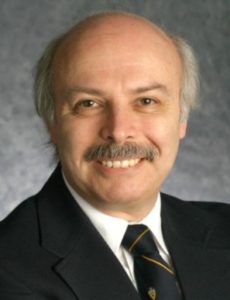
Andreas Mandelis
Andreas Mandelis, FRSC, FCAE, FAPS, FSPIE, FAAAS, FASME, DF-IETI, PhD, is a Full Professor of Mechanical and Industrial
Engineering; Electrical and Computer Engineering; and the Institute of Biomaterials and Biomedical Engineering, University of Toronto. He is the Canada Research Chair in Diffusion-Wave and Photoacoustic Sciences and Technologies. He is the Director of the Center for Advanced Diffusion-Wave and Photoacoustic Technologies (CADIPT) and of the new Institute for Advanced Non-Destructive and Non-Invasive Diagnostic Technologies (IANDIT) at the University of Toronto. He is also the President and CTO of Diffusion-Wave Diagnostic Technologies, Inc., Toronto, ON (www.diffusewavetech.com), and the CTO of Quantum Dental Technologies, Inc., Toronto, ON, Canada (www.thecanarysystem.com). He received his BS degree (Magna cum Laude) in physics from Yale University, and MA, MSE, and Ph.D. degrees from the Applied Physics and Materials Laboratory, Princeton University. He is the author and co-author of 430+ scientific papers in refereed journals and 190+ scientific and technical proceedings papers. He has been Editor-in-Chief of the Springer International Journal of Thermophysics (2014-19) and Topical Editor of the OSA Journal Optics Letters (2012-18). Currently he is an Associate Editor of the AIP Journals Review of Scientific Instruments, Journal of Applied Physics and member of the editorial board of the SPIE Journal of Biomedical Optics. He is Contributing Editor of the AIP flagship magazine Physics Today. He has several inventions, 39 patents and patents pending in the areas of photothermal tomographic imaging, signal processing and measurement, hydrogen sensors, dental laser diagnostics (biothermophotonics), several semiconductor non-destructive diagnostic technologies and laser biophotoacoustic and biothermophotonic tissue imaging. He has also been (2012-18) a National 1000-Talents Professor at the University of Electronic Science and Technology of China in Chengdu.
Professor Mandelis has received numerous national and international prizes and awards including the APS Keithley Award in Instrumentation Science, the Discovery Award in Science and Engineering (the Ontario Premier’s Innovation Award), the ASME 2009 Yeram Touloukian Award (and Medal) in Thermophysics, the Senior Prize of the International Photoacoustic and Photothermal Association, the Canadian Association of Physicists (CAP) Medal for Outstanding Achievement in Industrial and Applied Physics and the CAP-INO Medal for Outstanding Achievement in Applied Photonics. In 2014 he was elected Killam laureate, recipient of the Killam Prize in Engineering, one of Canada’s highest academic prizes awarded annually by the Governor General of Canada. In 2017 he was the recipient of the Inaugural Canadian NDT Research Award, Canadian Institute for Non-Destructive Evaluation (CINDE).
Andreas Mandelis’ theoretical research interests are focused on studies of physical energy conversion processes in condensed and biological matter as they impact instrumentation science and signal generation technologies. Core areas are thermophysics, optoelectronics, photovoltaics, photoacoustic, photothermal and general diffusion-wave phenomena in engineering, electronic, biological and photonic media. Current interests include building theoretical and experimental foundations of thermophysical, biothermophotonic and biophotoacoustic transport phenomena, high-performance diagnostic imaging techniques and advanced signal generation and processing methods (“waveform engineering”) for semiconductors, photovoltaic solar cells, hard (dental, bone) and soft tissues, novel photothermal biosensors, and defect inspection in industrial materials.
Aligned with his theoretical activities, his applied research interests span the development of a wide spectrum of novel instrumentation, measurement and imaging techniques using optical-to-thermal, thermoelastic, ultrasonic or photonic energy conversion high-dynamic-range and high-sensitivity analytical methodologies, leading to advanced non-destructive / non-invasive diagnostic, inspection and monitoring technologies. Current examples of applications are in the fields of alternative clean energy conversion devices (e.g. solar cells, nano-optoelectronic devices), industrial manufactured products (steels, metal composites, nano-coatings), thermophysical inverse problems in industrial materials, and biomedical and dental disease diagnostics, with major focus on advanced dynamic imaging instrumentation.
Center for Advanced Diffusion-Wave and Photoacoustic Technologies
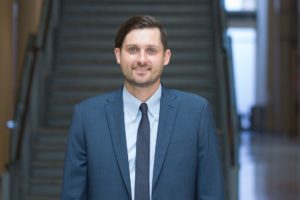
Tobin Filleter
Professor Tobin Filleter leads the Nanomechanics and Materials Laboratory in the Department of Mechanical and Industrial Engineering at the University of Toronto. He is a specialist in ultrasonic, magnetic flux leakage, and atomic force microscopy-based non-destructive testing as well as nanostructured materials characterization. His research interests also include micro and nanomechanics, tribology, and composite materials design. He teaches courses in Nanomechanics of Materials (MIE1744), Solid Mechanics (MIE1301), and Machine Design (MIE442).
http://www2.mie.utoronto.ca/labs/nmml/

Harry E. Ruda
Harry Ruda is the Stanley Meek Chair Professor in Nanotechnology at the University of Toronto, and Director of the Centre for Advanced Nanotechnology - Canada’s first centre for nanotechnology. After obtaining his BSc from Imperial College in 1979, he joined MIT, and from 1979 to 1982 he worked on the optical and transport properties of II-VI based infrared detector materials and obtained his PhD in 1982. Between 1982 and 1984 he developed one of the first theories for electron transport in selectively doped two dimensional electron gas heterostructures while working as an IBM postdoctoral fellow, and in 1984 he joined 3M Corporation as a senior scientist developing some of the first models for electronic transport and optical properties of wide bandgap II-VI semiconductors, while being a key member of the blue laser team. In 1989 he joined the University of Toronto, rising through the ranks to his current Full Professor appointment.
Professor Ruda has published over 290 publications in international refereed journals (with over 7,726 citations; h=43), has co-authored 4 books and has 14 patents. Professor Ruda’s research interests focus on optoelectronic nanostructures with application in areas such as biosensing and information technology.
Harry Ruda serves on the National Science and Engineering Council of Canada and on other government panels including those of the DOE, EPA and NSF in the US, and the RAE and EPSRC in the UK. He serves on the international advisory board of the National University of Science and Technology in Moscow, and as a board member of Canadian Solar Inc (CSIQ:NASDAQ). He has also served on the editorial boards of: Journal of Applied Physics, Applied Physics Letters, Journal of Nanoscience and Nanotechnology, Journal of Materials Science: Materials in Electronics, Nanotechnology Research Letters, and Nano-Micro Letters and is currently Chief Editor of IET-CDS. He is a Fellow of the Royal Society of Canada, Fellow of Institute of Physics, Fellow of the Institute of Nanotechnology, Fellow of the Institution of Engineering and Technology, and Fellow of the Canadian Academy of Engineering.
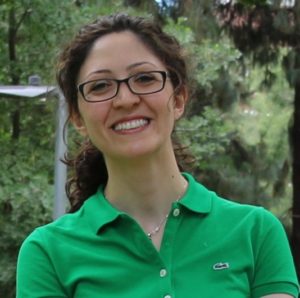
Fae Azhari
Fae Azhari is an Assistant Professor in the Departments of Mechanical & Industrial Engineering and Civil & Mineral Engineering at the University of Toronto. She completed her PhD in Structural Engineering and Mechanics at UC Davis and holds two master’s degrees, one in Industrial Engineering and Operations Research from UC Berkeley and the other in Civil Engineering from UBC.
Fae is a registered Professional Engineer with five years of industry experience. Fae is interested in structural health monitoring (SHM) and prognosis of engineering systems. SHM is a broader field that uses visual inspections, NDT/NDI/NIB, and real-time monitoring through permanently installed sensors as tools for continuously assessing the performance of structures and making condition-based maintenance decisions. Her group uses various monitoring techniques, including digital image correlation (DIC), electrical impedance tomography (EIT), fiber optic sensing, piezoresistive sensing using smart composites, acoustic emission (AE) testing, optical microscopy and scanning electron microscopy (SEM). Fae's main areas of research are: (I) sensor development, (II) adapting existing sensors for novel applications, and (III) developing decision-making frameworks that use probabilistic models to translate collected data into meaningful information and efficient remedial strategies. Her current research focuses on the application of SHM in a variety of structures including bridges, ships, and medical devices.
Concrete check-up: Fae Azhari develops diagnostics for critical infrastructure

Tom Chau
Tom Chau, PhD, PEng, is VP Research, Holland Bloorview Kids Rehabilitation Hospital, Director of the Bloorview Research Institute, and a Professor in the Institute of Biomaterials and Biomedical Engineering at the University of Toronto. He is currently the Chang Family Foundation Chair in Access Innovations. His research primarily aims to uncover and instrumentally translate the physiological and behavioral manifestations of communicative intent in children and youth with severe physical impairments. He has published over 200 journal articles relating to rehabilitation engineering. Dr. Chau's contributions to pediatric research have been recognized with numerous accolades including the Order of Ontario and Meritorious Service Cross.
https://news.engineering.utoronto.ca/ibbme-professor-tom-chau-receives-u-of-t-presidents-impact-award/
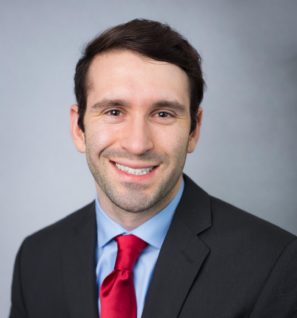
Kevin Golovin
Kevin Golovin is an Assistant Professor in the Departments of Mechanical & Industrial Engineering at the University of Toronto. Golovin holds degrees in Materials Science & Engineering, with his PhD and MASc from the University of Michigan and his BS from Cornell University. His thesis work, titled “Design and Application of Surfaces with Tunable Adhesion to Liquids and Solids”, won the ProQuest Distinguished Dissertation Award in 2018.
Golovin is a registered Professional Engineer in Ontario and served as Vice President Technology at Hygratek, a paint and coatings start-up, before becoming a faculty member at UBC. In 2021 Golovin moved his group to the University of Toronto. Kevin’s research interests include surface modification and characterization towards advanced engineering materials and applications. Specifically his group has focused on liquid-repellent materials, anti-icing, textile modification, and smart coatings with embedded sensors. Characterization tools within Golovin’s Durable Repellent Engineered Advanced Materials (DREAM) Laboratory include 3D laser scanning microscopy, rheology, streaming potential, contact angle goniometry, and grazing angle infrared spectroscopy (GA-FTIR). Kevin collaborates extensively with industry partners on next-generation coating technologies, including active research projects with Arc’teryx, lululemon, PRE Labs Inc., Boeing, and AMD Medicom. He was named an Emerging Leader in Chemical Engineering in 2020 by the Chemical Institute of Canada, and an Emerging Leader by the journal of Surface Topography: Metrology and Properties in 2022. Golovin was awarded the Faculty Research Excellence Award by the University of British Columbia in 2021, shortly before starting his tenure at the University of Toronto. DREAM Laboratory

Tony Sinclair
Tony Sinclair is a professor in the Department of Mechanical & Industrial Engineering at the University of Toronto. His research specialty is Ultrasonic Nondestructive Evaluation (NDE), with a focus on image enhancement via signal processing, phased arrays, precise measurement of defect size, ultrasonic transducer design, and characterization of material interfaces.
Tony’s work involves a combination of experimental and numerical modelling techniques, reported in over 200 journal and conference publications, and technical reports. Sponsors of current and past projects have included Ontario Hydro/OPG, NSERC, Pratt & Whitney Canada, NRC Institute for Aerospace Research, Rockwell International, Sigmabond Technologies, Cercast Aluminum, Tower Automotive, Atomic Energy of Canada, DRDC, MITACS, Hatch, Alcan International, ANDEC Manufacturing, Olympus NDT Canada, Advanced Measurement and Analysis Group, Eclipse Scientific, and Groupe Mequaltech.
Tony Sinclair was Chair of the Department of Mechanical & Industrial Engineering at the University of Toronto, 2004-2009. He is a past winner of the Faculty Teaching Award for the Faculty of Applied Science & Engineering at U of T. He is on the editorial board of NDT&E International, and has supervised approximately 60 graduate students, postdoctoral fellows, and research associates, plus 90 undergraduate thesis students.
http://www2.mie.utoronto.ca/labs/undel/
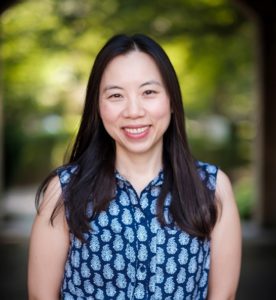
Aimy Bazylak
Prof. Aimy Bazylak is the Canada Research Chair in Thermofluids for Clean Energy and Professor in the Department of Mechanical and Industrial Engineering at the U of T. Her research is focused on advancing fuel cells, electrolyzers and batteries for clean power and energy storage in the absence of greenhouse gas emissions. She uses modelling and real-time imaging as non-invasive and non-destructive means to design new materials for high efficiency and high-performance electrochemical energy conversion. In 2011, she was awarded the I.W. Smith Award from the Canadian Society for Mechanical Engineering, and she received the Ontario Early Researcher Award in 2012. From 2015-2018, she served as the Director of the U of T Institute for Sustainable Energy. In 2015 she was named an Alexander Von Humboldt Fellow (Germany), and in 2019 she was named a Fellow of the American Society of Mechanical Engineers. In 2020, she was named a Helmholtz International Fellow (Germany), was awarded the U of T McLean Award, and was elected to the Royal Society of Canada College of New Scholars, Artists and Scientists.
https://news.engineering.utoronto.ca/mclean-award-recipient-aimy-bazylak-is-creating-new-technologies-for-sustainable-energy/

Hai-Ling Margaret Cheng
Professor Hai-Ling Margaret Cheng is an Associate Professor in the Institute of Biomedical Engineering and the Edward S. Rogers Sr. Department of Electrical and Computer Engineering.
Prof. Cheng is also a member of the Translational Biology & Engineering Program of the Ted Rogers Centre for Heart Research. She obtained her BSc and MSc in Electrical and Computer Engineering at the University of Calgary and subsequently worked in industry developing real-time synthetic aperture radar for Canadian defense surveillance. She returned to academia to complete her PhD in Medical Biophysics at the University of Toronto, specializing in MRI physics and developing interventional MRI guidance of focused ultrasound ablation therapy. After her PhD, she joined the Hospital for Sick Children, where she held a clinical role as a MRI physicist and later became a Scientist in the Research Institute. She is internationally recognized for her contributions to rapid quantitative MRI and perfusion techniques and for being one of the first Canadian scientists to introduce MRI into tissue engineering and regenerative medicine applications. Since joining the Faculty of Engineering in 2014, she has focused her research program on novel molecular and physiological imaging technologies for cardiovascular diagnostics and therapy guidance in regenerative medicine.
https://news.engineering.utoronto.ca/novel-mri-approach-gives-heart-failure-patients-new-hope/
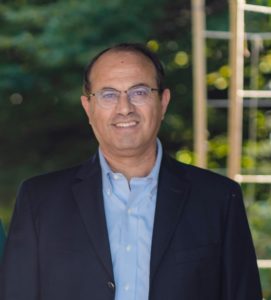
Ofer Levi
Dr. Ofer Levi is an Associate Professor in the Institute of Biomaterials and Biomedical Engineering and the Edward S. Rogers Sr. Department of Electrical and Computer Engineering at the University of Toronto.
Dr. Levi received his Ph.D. in Physics from the Hebrew University of Jerusalem, Israel in 2000, and worked in 2000-2007 as a Postdoctoral Fellow and as a Research Associate at the Departments of Applied Physics and Electrical Engineering, Stanford University, CA. He was a visiting Professor at Stanford University in 2007-2018 and served as an Associate Editor in Biomedical Optics Express (OSA) in 2013-2019. Dr. Levi is a Fellow of OSA, and a member of IEEE-Photonics, and SPIE. Dr. Levi led industry and academic teams in developing optical imaging systems, miniature biomedical sensors, and biomedical applications for the past 25 years and consulted to several companies in these areas.
His recent research areas include biomedical imaging systems and optical bio-sensors based on semiconductor devices and nano-structures, and their application to remote vital signs evaluation, bio-medical diagnostics, in vivo imaging, and study of bio-molecular interactions. More details can be found at http://biophotonics.utoronto.ca/
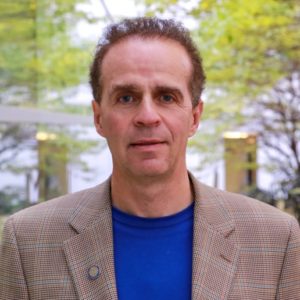
Alex Vitkin
Alex Vitkin is an engineering physicist/biomedical engineer by training, with further specialization in medical physics and biomedical optics. He is currently a full professor of Medical Biophysics and Radiation Oncology at the University of Toronto, a senior scientist at the Ontario Cancer Institute (Biophysics and Bio-imaging division), and a clinical medical physicist at Princess Margaret Cancer Centre (all in Toronto, Ontario, Canada).
Alex has published over 180 papers and book chapters on diagnostic and therapeutic uses of light in biomedicine, consults for several biophotonics / medical imaging companies, and is currently a topical editor of Optics Letters (2nd 3-year term). He serves on many research grant panels, both nationally and internationally (e.g., NSERC, CIHR, NIH, US Army, CIMIT, Dutch ZonMW). He serves on many research grant panels, both nationally and internationally (e.g., NSERC, CIHR, NIH, US Army, CIMIT, Dutch ZonMW). He lectures widely worldwide, delivering special seminars and summer school modules on biophotonics; he is currently an active participant in the SPIE Visiting Lecturer and OSA Travelling Lecturer programs.
He has recently won the Publication Impact Prize in Medical Physics (awarded by the Canadian Organization of Medical Physicists), and is currently a visiting professor at the Nizhny Novgorod State Medical Academy, Russia (thru the Leading Scientist Mega-Grant program). Dr. Vitkin is also a board-certified medical physicist thru the Canadian College of Physicists in Medicine (CCPM), and is a Fellow of the Optical Society of America (OSA) and of the Society of Photo-Optical Instrumentation Engineers (SPIE).
https://medbio.utoronto.ca/faculty/vitkin
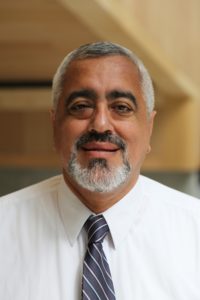
Kamran Behdinan
Dr. Kamran Behdinan, earned his Ph.D in Mechanical Engineering from the University of Victoria in British Columbia in 1996, and has a considerable experience in both academic and industrial settings.
Dr. Behdinan was appointed to the academic staff of Ryerson University in 1998, tenured and promoted to the level of associate professor in 2002 and subsequently to the level of Professor in 2007 and served as the director of the aerospace engineering program (02-03), and the founding Chair of the newly established Department of Aerospace Engineering (07/2003 – 07/2011). Kamran was a founding member and the Executive Director of the Ryerson Institute for Aerospace Design and Innovation (2003-2011). He was also a founding member and the coordinator of the Canadian-European Graduate Student Exchange Program in Aerospace Engineering at Ryerson University. Dr. Behdinan held the NSERC Design Chair in “Engineering Design and Innovation”, 2010-2012, sponsored by Bombardier Aerospace and Pratt and Whitney Canada. He joined the Department of Mechanical and Industrial Engineering, University of Toronto, in the rank of Full Professor in September 2011. He is the NSERC Design Chair in “Multidisciplinary Design and Innovation – UT IMDI”, sponsored by NSERC, University of Toronto, and thirteen companies including Bombardier Aerospace, Pratt and Whitney Canada, United Technology Aerospace Systems, Magna International, Honeywell, SPP Canada Aircraft, Ford, and DRDC Toronto. He is the founding director of the “University of Toronto Institute for Multidisciplinary Design and Innovation”, an industry-centred project-based learning institute in partnership with major aerospace and automotive companies.
https://news.engineering.utoronto.ca/covid-19-a-last-resort-breathing-machine-prototype-heads-to-clinical-trials/
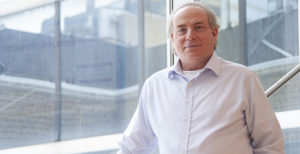
Yoav Finer
Dr. Finer’s research foci are the development of restorative materials and dental implants systems with improved performance by exploring the interactions of these materials with the human body and bacteria. The intent is to develop restorative materials and techniques that will extend the service life of dental restorations and reduce complications associated with dental implants.
https://www.dentistry.utoronto.ca/faculty-profiles/yoav-finer
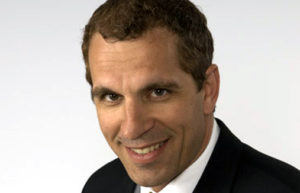
Doug Perovic
Dr. Doug Perovic obtained his undergraduate and graduate degrees from the Department of Materials Science (MSE) and Engineering at the University of Toronto. Subsequently he worked at the National Research Council Canada and the Cavendish Laboratory at the University of Cambridge. Dr. Perovic joined MSE at U of T in 1992 as an Assistant Professor and was promoted to full Professor in 1997 where shortly thereafter he was appointed as Chairman of the Department.
In 2000 He championed the world’s first undergraduate degree program in nanotechnology at the University of Toronto. A renowned authority on forensic engineering and failure analysis, Dr. Perovic has led many investigations in Canada and the United States, often serving as the voice of the profession in the media on high profile cases. He developed and teaches the only undergraduate and graduate university level course on Forensic Engineering in Canada and developed the new Certificate in Forensic Engineering Program at U of T. Dr. Perovic is the Celestica Chair in Materials for Microelectronics, a Fellow of the Canadian Academy of Engineering (FCAE), Fellow of the American Association for the Advancement of Science (FAAAS), Senior Fellow at Massey College in the University of Toronto and co-director of the Ontario Centre for Characterization of Advanced Materials (OCCAM).
https://news.engineering.utoronto.ca/making-sense-disasters-u-t-engineering-offers-new-certificate-forensic-engineering/
Industry & Health Sector Advisory Board Brochure
Industry & Health Sector Advisory Board members of IANDIT

Glenn Tubrett
Glenn Tubrett is Chief Executive Officer at the Canadian Institute for Non-Destructive Evaluation (CINDE). CINDE is Canada’s not-for-profit, member-based, technical society dedicated to the people and companies engaged in non-destructive evaluation (NDE), non-destructive testing (NDT), and inspection.
Glenn holds a Bachelor of Electrical Engineering degree from Memorial University of Newfoundland. Prior to CINDE Glenn worked for over 20 years in various roles at the Canadian Standards Association focused on codes, standards, certification and legislation.

Tony Sinclair
Tony Sinclair is a professor in the Department of Mechanical & Industrial Engineering at the University of Toronto. His research specialty is Ultrasonic Nondestructive Evaluation (NDE), with a focus on image enhancement via signal processing, phased arrays, precise measurement of defect size, ultrasonic transducer design, and characterization of material interfaces.
Tony’s work involves a combination of experimental and numerical modelling techniques, reported in over 200 journal and conference publications, and technical reports. Sponsors of current and past projects have included Ontario Hydro/OPG, NSERC, Pratt & Whitney Canada, NRC Institute for Aerospace Research, Rockwell International, Sigmabond Technologies, Cercast Aluminum, Tower Automotive, Atomic Energy of Canada, DRDC, MITACS, Hatch, Alcan International, ANDEC Manufacturing, Olympus NDT Canada, Advanced Measurement and Analysis Group, Eclipse Scientific, and Groupe Mequaltech.
Tony Sinclair was Chair of the Department of Mechanical & Industrial Engineering at the University of Toronto, 2004-2009. He is a past winner of the Faculty Teaching Award for the Faculty of Applied Science & Engineering at U of T. He is on the editorial board of NDT&E International, and has supervised approximately 60 graduate students, postdoctoral fellows, and research associates, plus 90 undergraduate thesis students.

Yoav Finer
Dr. Finer’s research foci are the development of restorative materials and dental implants systems with improved performance by exploring the interactions of these materials with the human body and bacteria. The intent is to develop restorative materials and techniques that will extend the service life of dental restorations and reduce complications associated with dental implants.

Alex Vitkin
Alex Vitkin is an engineering physicist/biomedical engineer by training, with further specialization in medical physics and biomedical optics. He is currently a full professor of Medical Biophysics and Radiation Oncology at the University of Toronto, a senior scientist at the Ontario Cancer Institute (Biophysics and Bio-imaging division), and a clinical medical physicist at Princess Margaret Cancer Centre (all in Toronto, Ontario, Canada).
Alex has published over 180 papers and book chapters on diagnostic and therapeutic uses of light in biomedicine, consults for several biophotonics / medical imaging companies, and is currently a topical editor of Optics Letters (2nd 3-year term). He serves on many research grant panels, both nationally and internationally (e.g., NSERC, CIHR, NIH, US Army, CIMIT, Dutch ZonMW). He serves on many research grant panels, both nationally and internationally (e.g., NSERC, CIHR, NIH, US Army, CIMIT, Dutch ZonMW). He lectures widely worldwide, delivering special seminars and summer school modules on biophotonics; he is currently an active participant in the SPIE Visiting Lecturer and OSA Travelling Lecturer programs.
He has recently won the Publication Impact Prize in Medical Physics (awarded by the Canadian Organization of Medical Physicists), and is currently a visiting professor at the Nizhny Novgorod State Medical Academy, Russia (thru the Leading Scientist Mega-Grant program). Dr. Vitkin is also a board-certified medical physicist thru the Canadian College of Physicists in Medicine (CCPM), and is a Fellow of the Optical Society of America (OSA) and of the Society of Photo-Optical Instrumentation Engineers (SPIE).
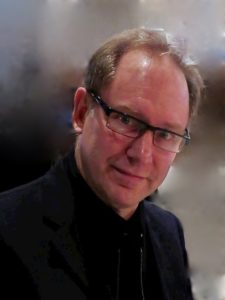
Ray ten Grotenhuis
Ray ten Grotenhuis has been employed at Ontario Power Generation Inc., in the Advanced Inspection and Maintenance Department for over 31 years. Specializing in industrial ultrasonics, his duties at OPG are focused on development of advanced methods for application to corporate assets including conventional, thermal and nuclear stations.
His most recent work has been development of 2 stage Full Matrix Capture, Total Focus Method, the result of which was successfully applied at the Pickering and Darlington Nuclear Generating Stations. OPG has been successful in patenting this development in multiple jurisdictions around the globe. Ray also contributes to the ASME Boiler and Pressure Vessel committee, developing the code requirements for FMC/TFM inspection applications. Ray continues to develop this technology for Fuel Channel inspections at CANDU utilities.
Ray received an undergraduate degree in Mechanical Engineering from the University of Toronto and a Master degree in Mechanical Engineer from Queen’s University at Kingston. Ray is registered as a Professional Engineer in the province of Ontario and holds CGSB 48.9712 level III certification in Ultrasonic Testing.
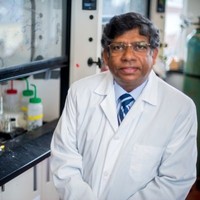
Nathan Yoganathan
Dr. T. Nathan Yoganathan is currently the President and Chief Scientific Officer of JN Nova Pharma Inc. Dr. Yoganathan is a university and industrial research scientist, turned entrepreneur who became an experienced CEO, having successfully launched several private and a public biotechnology companies. He has over twenty-five years of experience in scientific research in cell signaling and gene expression technology and instrumentation, has published several articles, and is an inventor of many patents.
Dr. Yoganathan is the recipient of numerous awards, including from the Natural Sciences and Engineering Research Council of Canada, and the Thyroid Foundation of Canada. He serves on a number of advisory boards for both government and industry, including the CIHR Strategic Training Program in the Bioinformatics Advisory Board, BIOTECanada's Emerging Companies Advisory Board, and past member of the Ontario Research Fund Advisory Board. He was elected as a Fellow of the Royal Society of Biology. Dr. Yoganathan was a faculty member of the Department of Medicine at the University of Toronto, and was affiliated with the Lunenfeld and Tanenbaum Research Institute of Mount Sinai Hospital. He holds a B.Sc. (Honours) from the University of North London, a M.Sc. from the University of Sussex, and a Ph.D. from the University of Oslo.
http://jnnova.com/index.html
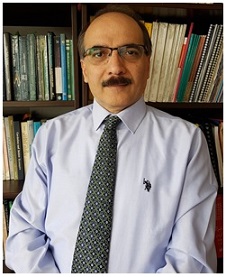
Mohammad Khosroshahi
Professor Mohammad E. Khosroshahi received his Ph.D. in Applied Physics (Application of Lasers in Medicine) from Hull University (UK) in 1993 with the thesis on ophthalmological tissue ablation with tunable mid-IR and excimer lasers in collaboration with Moorefields hospital in London. He joined the Biomaterial and Tissue Engineering group of the Faculty of Biomedical Engineering at Amirkabir University of Technology (AUT) in Tehran where he was a Full Professor. He has been the Director of AUT Laser and Optics Research Center, Associate Dean of Research, and Chair of Biomaterial Group. In 2013, he joined the University of Toronto, Department of Mechanical & Industrial Engineering (MIE) as a Visiting Professor working on ‘’Contrast-enhanced photoacoustic imaging of Tumor’’ at the Center for Advanced Diffusion-Wave and Photoacoustic Technologies (CADIPT). He then continued as a research associate at CADIPT working on the contrast-enhanced imaging of blood, and became the faculty adjunct Professor in 2018.
Professor Khosroshahi is the author of two books: Laser Applications in Medicine, and Applications of Biophotonics and Nanobiomaterials in Biomedical Engineering, and co-author of two book chapters on Laser surface modification of titanium alloys as biomedical implants. He has published 110 peer-reviewed papers and has 2 patents and patent-pending related to nanobiosensors. His main research interests are Nanobiophotonics, Nanomedicine, Multifunction nanostructures, Targeted drug delivery, Targeted photothermal therapy, Guided bioimaging, Biological chaos, Cancer thermodynamics, Optical detection of dental decay, Photoacoustic and Photothermal characterization. Currently, Professor Khosroshahi is Director of the Nanobiophotonics and Biomedical Research Lab at MIS-Electronics in Richmond Hill where he is working on the development of novel colloidal and substrate nanobiosensors based on the Plasmon-enhanced fluorescence spectroscopy (PEFS) and Enhanced-surface-enhanced Raman scattering (E-SERS) for targeted detection of breast cancer biomarkers such as HER-II and CA 15-3, dual-mode guided bioimaging, fluorescence microscopy, and contrast phase microscopy. He is a member of the Editorial Board of the Journal of Nanomedicine and Nanotechnology, a fellow member of the Institute of Nanotechnology, a member of the Canadian Association of Physics, Canadian Medical and Biological Engineering Society, Optical Society of America, and SPIE.
IANDIT Management Team
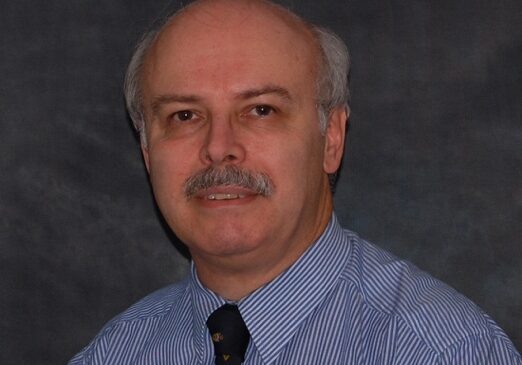
Andreas Mandelis
Director
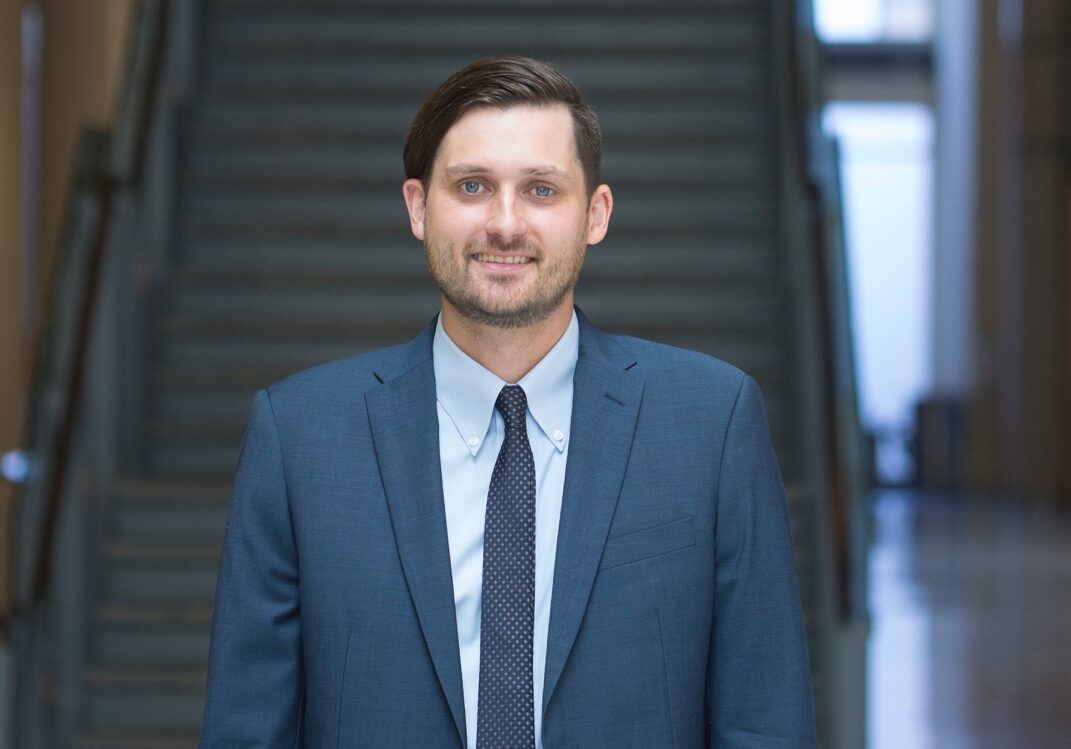
Tobin Filleter
Associate Director
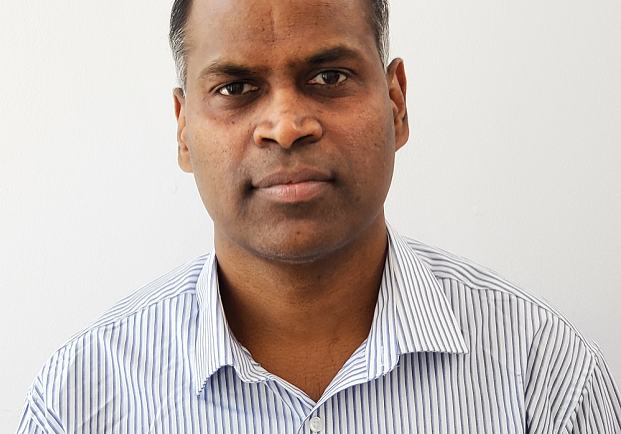
Konesh Sivagurunathan
Technology Manager
Academic Membership Brochure
IANDIT members at University of Toronto
Thank you for visiting!
Please contact us for more information.
Contact us:
IANDIT Technology Manager
Email: iandit@mie.utoronto.ca

